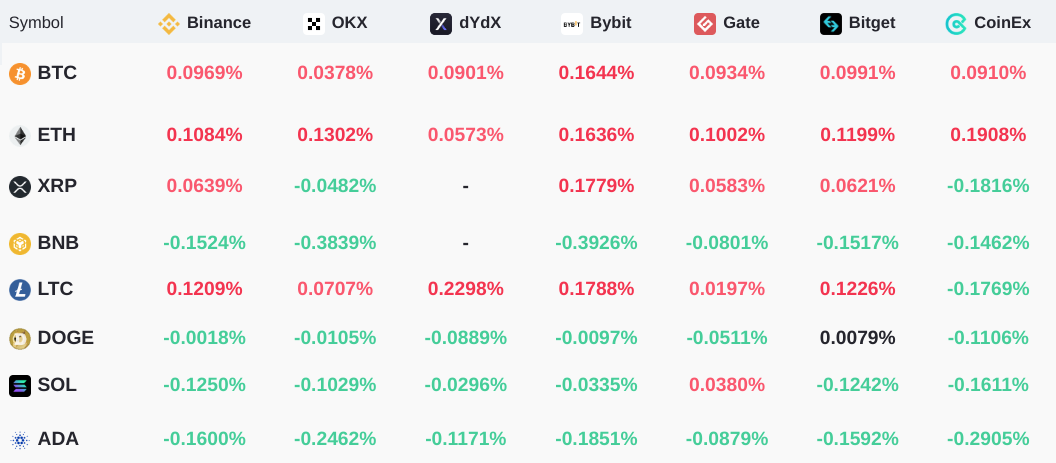
Bitcoin and select altcoins show resilience even as the crypto market sell-off continues

Regulatory enforcement against the crypto sector has spooked investors, but the total crypto market capitalization continues to hold above $1 trillion.
A bearish trend formation has been pressuring cryptocurrency prices for the past eight weeks, driving the total market capitalization to its lowest level in more than two months at $1.06 trillion, a 2.4% decline between June 4 and June 11.
This time, the move wasn’t driven by Bitcoin (BTC), as the leading cryptocurrency gained 0.8% during the seven-day period. The negative pressure came from a handful of altcoins that plunged over 15%, including BNB (BNB), Cardano (ADA), Solana (SOL), Polygon (MATIC) and Polkadot (DOT).

Notice that the downtrend initiated in mid-April has tested the support level in multiple instances, indicating that an eventual break to the upside would require extra effort from the bulls.
The United States Securities and Exchange Commission tagged multiple altcoins as securities in separate lawsuits filed last week against crypto exchanges Binance and Coinbase.
Despite the worsening crypto regulatory environment, two derivatives metrics indicate that bulls are not yet throwing in the towel but will likely have a hard time breaking the bearish price formation to the upside.
Crypto exchanges are under severe constraints in the U.S.
Binance.US announced on June 9 the upcoming suspension of U.S. dollar deposits and withdrawal channels, besides delisting USD trading pairs. The exchange added that it plans to transition to a crypto-only exchange but maintains a 1:1 ratio for customer assets. The SEC issued an emergency order on June 6 to freeze the assets of Binance.US.
Also on June 9, the Crypto.com exchange announced it would no longer service institutional clients in the United States. Although the Singapore-based company alleged a lack of client demand, the curious timing matching the recent actions against Coinbase and Binance has raised suspicions, as pictured by UtilizeWeb3 founder CryptoTea.
The SEC will likely sue Crypto .com
they sued Coinbase and Binance for selling securities
specifically naming Solana, Cardano, Sandbox, Matic, CHZ, BNB, Mana, Algo and more
crypto .com also sells ALL of these cryptos
plus they launched their own CRO coin
plus they offer… pic.twitter.com/2nuqd5ljVY— Crypto Tea (@CryptoTea_) June 8, 2023
Despite being spared from the attacks coming from the SEC, the vice-leader Ether (ETH) traded down 3.5% between June 4 and June 11 after co-founder Vitalik Buterin stated that the Ethereum network would “fail” if scaling doesn’t go through. In a June 9 post via his personal blog, Buterin explained that the success of Ethereum depends on layer-2 scaling, wallet security and privacy-preserving features.
Derivatives markets show balanced leverage demand
Perpetual contracts, also known as inverse swaps, have an embedded rate that is usually charged every eight hours.
A positive funding rate indicates that longs (buyers) demand more leverage. Still, the opposite situation occurs when shorts (sellers) require additional leverage, causing the funding rate to turn negative.

The seven-day funding rate for BTC and ETH was neutral, indicating balanced demand from leveraged longs (buyers) and shorts (sellers) using perpetual futures contracts. Curiously, BNB, SOL and ADA displayed no excessive short demand after a 15% or higher weekly price decline.
Tether demand in Asia shows modest resilience
The Tether (USDT) premium is a good gauge of China-based crypto retail trader demand. It measures the difference between China-based peer-to-peer trades and the United States dollar.
Excessive buying demand tends to pressure the indicator above fair value at 100%, and during bearish markets, Tether’s market offer is flooded, causing a 2% or higher discount.

Currently, the Tether premium on OKX stands at 99.8%, indicating a balanced demand from retail investors. Consequently, the indicator shows resilience considering the cryptocurrency markets dropped 17.7% over the last eight weeks to $1.06 trillion from $1.29 trillion.
Related: Democrats’ ‘war on crypto’ will lose its key voters, Winklevoss twins
Given the balanced demand according to the funding rate and stablecoin markets, bulls should be more than satisfied, given that the recent regulatory FUD was unable to break the cryptocurrency market capitalization below $1 trillion.
It is unclear whether the market will be able to break from the bearish trend. Moreover, there is no apparent rationale for bulls to jump the gun and place bets on a V-shaped recovery, given the uncertainty in the regulatory environment. Ultimately, bears are in a comfortable place despite the resilience in derivatives and stablecoin metrics.
This article does not contain investment advice or recommendations. Every investment and trading move involves risk, and readers should conduct their own research when making a decision.
This article is for general information purposes and is not intended to be and should not be taken as legal or investment advice. The views, thoughts, and opinions expressed here are the author’s alone and do not necessarily reflect or represent the views and opinions of Cointelegraph.
Go to Source
Author: Marcel Pechman









